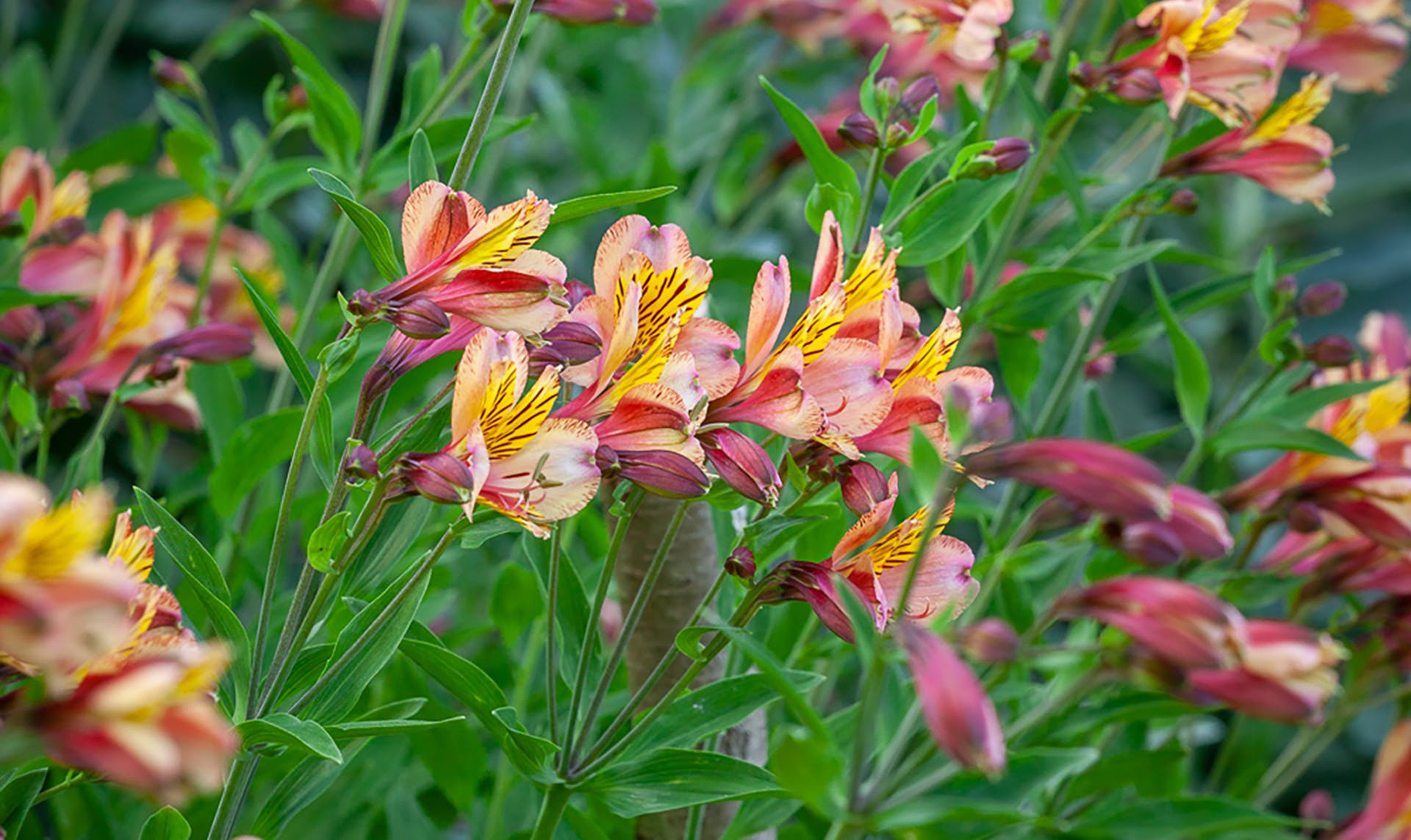Alstroemeria: The Lily of the Incas
Alstroemeria, often referred to as the Peruvian lily or Lily of the Incas, is a genus of flowering plants in the Alstroemeriaceae family. Native to South America, particularly the Andes Mountains, these elegant flowers have captivated gardeners and florists worldwide with their vibrant colors, unique inverted blooms, and long vase life.
A Botanical Marvel
Alstroemeria plants are herbaceous perennials that typically grow from bulbous roots. They feature slender stems adorned with lance-shaped leaves that are often variegated or striped. The flowers, which are borne in clusters, are composed of six petals that are fused at their base. The petals are arranged in a unique inverted fashion, with the outer petals curving inwards and the inner petals curving outwards. This distinctive arrangement adds to the overall allure of the flower.

A Kaleidoscope of Colors
Alstroemeria flowers are available in a stunning array of colors, including white, pink, red, orange, yellow, purple, and even bi-colored varieties. The color palette is so diverse that it can accommodate almost any floral arrangement or garden theme. Whether you prefer the delicate pastel shades of pink and white or the bold, vibrant hues of red and orange, there is an Alstroemeria to suit your taste.
A Symbol of Friendship and Devotion
In many cultures, Alstroemeria flowers are associated with friendship, devotion, and gratitude. The inverted petals are said to symbolize the turning of the heart towards a loved one, while the vibrant colors are thought to represent the warmth and passion of friendship. These symbolic meanings make Alstroemeria a popular choice for bouquets, anniversaries, and other special occasions.

Growing Alstroemeria: A Gardener’s Delight
Alstroemeria plants are relatively easy to grow in gardens and containers. They thrive in sunny locations with well-drained soil. While they can tolerate some frost, they are best suited to climates with mild winters. Here are some tips for growing Alstroemeria:
Planting: Plant Alstroemeria bulbs in the spring or fall, at a depth of about 4-6 inches. Space the bulbs about 12 inches apart to allow for proper growth.
Alstroemeria in Floral Arrangements
:max_bytes(150000):strip_icc()/peruvian-lily-alstroemeria-plant-profile-4690186-01-4b3b68f0f83a4589934415c7c1156278.jpg)
Alstroemeria flowers are a versatile addition to floral arrangements. Their long vase life, vibrant colors, and unique shape make them a popular choice for bouquets, centerpieces, and corsages. Here are some tips for using Alstroemeria in floral arrangements:
Conditioning: Before using Alstroemeria in a bouquet, condition the stems by cutting them at an angle and submerging them in warm water with flower food.
Alstroemeria: A Timeless Beauty
Alstroemeria is a genus of flowering plants that has captured the hearts of gardeners and florists for centuries. With their vibrant colors, unique inverted blooms, and symbolic meanings, Alstroemeria flowers continue to be a popular choice for gardens and floral arrangements. Whether you are a seasoned gardener or simply appreciate the beauty of nature, Alstroemeria is a plant that is sure to delight and inspire.

:max_bytes(150000):strip_icc()/how-to-grow-coleus-1402921-02-6ca494adf94f4a5887c94256a24ebf33.jpg?w=200&resize=200,112&ssl=1)



:max_bytes(150000):strip_icc()/hoya-plants-1315763-hero-fe8b10a522eb4d7e9ada8abbc303fbc5.jpg?w=200&resize=200,112&ssl=1)